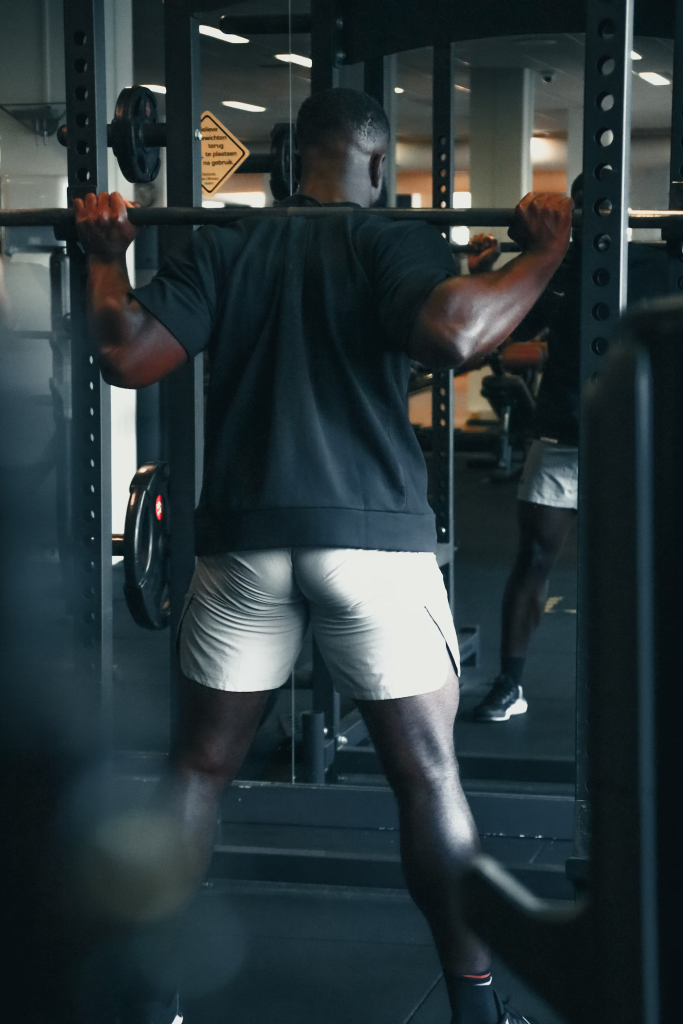Fitness training offers a diverse range of approaches to help individuals achieve their health and wellness goals. Each type of training brings unique benefits, catering to different aspects of physical and mental well-being.
Whether you’re aiming to boost endurance, build strength, enhance flexibility, or improve overall balance, there’s a method tailored to suit your needs and preferences.

In this post, we break down various fitness training styles, providing practical insights, benefits, and examples for each. From cardiovascular exercises that strengthen your heart to mind-body practices that promote relaxation and focus, you’ll find actionable advice to enhance your fitness journey.
1. Cardiovascular Training
Cardiovascular training, also known as aerobic exercise, is designed to improve heart health and increase endurance. This form of training involves sustained activities that elevate your heart rate and improve the efficiency of your cardiovascular system.
Benefits Of Cardiovascular Training
- Strengthens the heart and lungs.
- Boosts endurance for prolonged physical activity.
- Assists in weight loss by burning calories.
- Improves overall energy levels.
Examples Of Cardiovascular Training
- Running and Jogging: Ideal for building endurance and improving cardiovascular health.
- Cycling: Low-impact exercise suitable for all fitness levels.
- Swimming: Provides a full-body workout while being gentle on joints.
- Brisk Walking: An accessible option for all fitness levels.
Tips For Cardiovascular Training
- Start with 20–30 minutes of moderate exercise three to five times a week.
- Gradually increase intensity and duration to build endurance.
- Incorporate interval training for added benefits.
2. Strength Training
Strength training focuses on building muscle mass, improving bone density, and enhancing overall strength. It typically involves resistance exercises using free weights, machines, resistance bands, or body weight.
Benefits Of Strength Training
- Increases muscle strength and size.
- Boosts metabolism, aiding in weight management.
- Improves bone health, reducing the risk of osteoporosis.
- Enhances overall functional strength for daily activities.
Examples Of Strength Training
- Weightlifting: Exercises like bench presses, squats, and deadlifts target specific muscle groups.
- Bodyweight Exercises: Push-ups, pull-ups, and planks are convenient and effective.
- Resistance Bands: Provide variable resistance for targeted muscle engagement.
Tips For Strength Training
- Perform exercises targeting major muscle groups 2–3 times per week.
- Focus on proper form to maximise results and avoid injury.
- Allow for rest and recovery between sessions.
3. Flexibility Training
Flexibility training is aimed at improving the range of motion in muscles and joints. It helps reduce stiffness, enhances posture, and lowers the risk of injury.
Benefits Of Flexibility Training
- Improves joint mobility and muscle elasticity.
- Aids in recovery by reducing muscle soreness.
- Enhances posture and alignment.
Examples Of Flexibility Training
- Static Stretching: Involves holding stretches for 15–30 seconds to elongate muscles.
- Dynamic Stretching: Incorporates movement, such as arm circles or leg swings, to improve mobility.
- Yoga: Combines stretching with breathing exercises for flexibility and relaxation.
Tips For Flexibility Training
- Include stretching exercises in your warm-up and cool-down routines.
- Aim for at least 10–15 minutes of stretching daily.
- Gradually increase the intensity and duration of stretches.
4. Functional Training
Functional training enhances the body’s ability to perform everyday tasks efficiently and safely. It focuses on movements that improve coordination, balance, and overall strength.
Benefits Of Functional Training
- Prepares the body for real-life activities.
- Enhances balance and stability.
- Reduces the risk of injury during daily movements.
Examples Of Functional Training
- Kettlebell Swings: Build strength and mimic lifting motions used in daily tasks.
- Medicine Ball Exercises: Improve core stability and rotational strength.
- Bodyweight Movements: Include squats, lunges, and planks to enhance overall functional fitness.
Tips For Functional Training
- Focus on exercises that mimic everyday movements.
- Combine balance and strength exercises for a comprehensive workout.
- Incorporate it into your routine 2–3 times per week.
5. High-Intensity Interval Training (HIIT)
High-intensity interval Training (HIIT) alternates between short bursts of intense activity and periods of rest or low-intensity exercise. This method is highly efficient for improving fitness levels and burning calories in a short time.
Benefits Of HIIT
- Maximises calorie burn and fat loss.
- Improves cardiovascular health and endurance.
- Increases metabolism even after the workout ends.
Examples Of HIIT Workouts
- Tabata Training: 20 seconds of high-intensity effort followed by 10 seconds of rest for four minutes.
- Circuit Training: Combines cardio and strength exercises in quick succession.
- Sprint Intervals: Alternating between short sprints and walking or jogging.
Tips For HIIT
- Start with shorter sessions and increase intensity gradually.
- Perform HIIT 2–3 times per week, allowing for recovery days.
- Combine with other training methods for a balanced routine.
6. Balance Training
Balance training improves stability and coordination, making it particularly beneficial for older adults and athletes. It strengthens stabilising muscles, reducing the risk of falls and injuries.
Benefits Of Balance Training
- Enhances coordination and posture.
- Improves functional strength for daily activities.
- Reduces the risk of falls and injuries.
Examples Of Balance Training
- Single-Leg Stands: Simple exercises to improve stability.
- Balance Boards: Strengthens core muscles and enhances coordination.
- Yoga Poses: Such as the tree pose, focuses on stability.
Tips For Balance Training
- Incorporate balance exercises into your routine 2–3 times per week.
- Progress from basic to advanced exercises as your balance improves.
- Use props like balance balls or boards for added challenge.
7. Sports-Specific Training
Sports-specific training focuses on improving performance in a particular sport by targeting skills such as speed, agility, and power.
Benefits Of Sports-Specific Training
- Enhances performance in chosen sports activities.
- Improves agility, coordination, and reaction time.
- Builds strength and stamina for sport-specific movements.
Examples Of Sports-Specific Training
- Agility Ladder Drills: Improve foot speed and coordination.
- Plyometric Training: Develops explosive power for jumping or sprinting.
- Sprint Intervals: Boost speed and cardiovascular endurance.
Tips For Sports-Specific Training
- Tailor exercises to the demands of your chosen sport.
- Focus on both physical conditioning and technical skills.
- Work with a coach or trainer to optimise your programme.
8. Mind-Body Training
Mind-body training combines physical exercises with mental focus to enhance both physical and emotional well-being. This type of training is especially beneficial for stress reduction and relaxation.
Benefits Of Mind-Body Training
- Reduces stress and promotes relaxation.
- Improves flexibility, balance, and core strength.
- Enhances mental focus and mindfulness.
Examples Of Mind-Body Training
- Pilates: Strengthens the core and improves posture.
- Tai Chi: A meditative exercise that enhances balance and focus.
- Yoga: Combines physical poses with deep breathing and mindfulness.
Tips For Mind-Body Training
- Practise in a calm and distraction-free environment.
- Focus on breathing and maintaining good posture during exercises.
- Include it as part of your weekly routine to complement other training methods.
Conclusion
Incorporating a variety of fitness training styles into your routine can help you achieve a well-rounded approach to health and wellness. Whether your focus is on building endurance, increasing strength, improving flexibility, or enhancing coordination, there are training methods to suit your goals and preferences.
By understanding the benefits and examples of each type of training, you can create a balanced plan that supports your physical and mental well-being while keeping your workouts engaging and effective.
Visit south melbourne boxing to know what fitness training is best for you!
Frequently Asked Questions
How Does Cardiovascular Training Benefit Your Body?
Cardiovascular training, like running, cycling, or swimming, improves heart and lung health, increases endurance, and helps with weight management. It’s great for overall energy and reducing the risk of chronic diseases.
What Is Flexibility Training And Who Should Do It?
Flexibility training involves exercises like stretching and yoga to improve the range of motion in your joints. It’s beneficial for everyone as it reduces stiffness, lowers injury risk, and enhances daily movements.
How Can High-Intensity Interval Training (HIIT) Help Achieve Fitness Goals?
HIIT alternates short bursts of intense activity with periods of rest or low-intensity exercise. It’s an efficient way to burn calories, improve cardiovascular health, and build endurance in a short amount of time.
